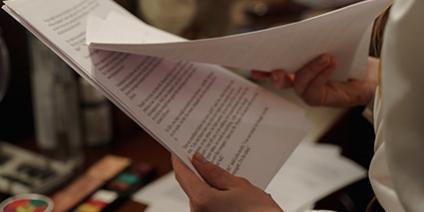I originally had no intention to ‘teach’ Mindfulness. After completing the Level 1 teaching course as part of my Masters in Mindfulness Studies with the University of Aberdeen the seed was planted and I now find myself in the middle of the teacher training pathway. between the Train to Teach Mindfulness Level One course (Next Level One weekend courses 4th June and 28th November)
On the Level One first weekend we began by sitting in a circle and each person would take a turn in leading the same practice, each person picking up where the last person left off – beginning with posture, then the next person would move to intention and motivation, to settling, grounding and resting. It is a relaxed way of beginning and despite a communal feeling of nervousness there was also great camaraderie, humour and support- a feeling that we were all in it together. My anxiety really gave me something to focus on for my mindfulness practice!
After the practice we have a chance to begin our enquiry practice, where we learn to help the person to become aware of their thoughts feelings and sensations and to perhaps find patterns of thinking – to help people notice things about themselves and their own mind habits. It is not a time for judgements or advice or opinions; it is not therapy (although it may be profoundly therapeutic). For me it has taken time to unlearn these conditioned reactions to another’s pain – my mindfulness practice has taught me that even the best intentioned ‘advice’ can be way off the mark for the person concerned and even potentially damaging for them. The training helps us to let go of these old patters of thinking and reacting and relating to others, as we learn new skills and mind habits of mindful listening, being present and allowing space and even silence to be the teacher. There is a lot to be said for silence.
In the second weekend we have a longer part of a practice to lead and I led a bodyscan. We were online for this section. I felt weird listening to my own voice and had concerns about the tone of voice to speak with. I became aware of the different tones of voice I use when talking to different people and I have never been one to talk in front of groups. The advice to record myself may be good advice, but I still even now am noticing such a resistance in my mind. Worth some more mindful delving into! I have decided to try to sound like I am reading a bedtime story to my children. Who I have always spoken to like adults but it’s the soothing bedtime tone, not a patronizing tone – I hope!
An integral part of the Aberdeen Masters course (you can do this course online apart from the teaching retreats) involves undertaking a commitment to a schedule of daily practice (40mins a day) and journaling the experience which was one of the things that allured me to the course. This has provided enormous resource, experience and richness that I have found means that when I lead a practice it is coming from an embodied place – not from the head. I have realized that this for me is the difference between ‘teaching’ (information/knowledge passed on from head – i.e. top down) and facilitating – guiding from a deeper place of knowing, of being, of settled grounded focus.
The Compassion training as part of the MSc course enables the teacher to connect with a deeper understanding of more subtle thoughts, emotions, even more elusive attitudes – sometimes self-deprecating thoughts, working with the inner critic; having gone through profound realisations of a tendency to mentally self-harm, and finding a place of mutuality of essence with others “Just like me…you want to be happy/safe/healthy” etc This gives the ‘teacher’ space, permission, and a sense of ‘allowing’ to occur with a deeper realization that it is seriously not our job to ‘fix’ others; this is the journey: we are not broken, there is nothing wrong. Tears are welcome here, and for me celebrated. I did have to ask people not to be concerned about the tears as sympathetic sad faces looked at me – tears of relief! All mixed up with unknown confused unformed inexpressible emotions (what even is an amotion I wondered as they came tumbling out)– catharsis in action, liberation of blockage made manifest was something to celebrate. Tissues welcome here too. All good. I recommend a Mindfulness Level 2 – Responding with Compassion before training to teach for the depth of understanding it provides or you could have a look at he new UWS Master’s Course in Mindfulness & Compassion which trains the full teaching pathway as part of the course and is based in London.
So now I am in the stage where we work with a peer group, taking turns each week to work through the MBLC programme guiding the practices and undertaking enquiry practice. We meet weekly when we can. We are supposed to have a group of 4, but in reality it is difficult to get everyone to meet so we have 9 in our group and it is still difficult. If you are thinking of forming a peer group it might be an idea to group with others who are free on a certain evening.
So I sit here now, on screen, it’s my turn. No anxiety now, a slight frisson of excitement – I know my peer group well now and we have fun with it. It’s OK to mess up – that’s why we are practicing. Sometimes ridiculous things come out of my mouth, or I talk myself into a grammatical cul-de-sac; we giggle a little and move on, mindfully. Last week it was my turn to guide Settling, Grounding, Resting with Breath Support. I find it helpful to listen to several versions of the practice to help me, the day I am leading the sit. I use the MBLC app, and there is a short version on there, and also some on the MA youtube channel. Even though I have listened to many hours of guidance during the Level One Mindfulness Course and also during the MSc Mindfulness Studies course it still helps me to read my journal notes and do the practice the same day. At first I wrote notes to assist me, to allay my nerves but quickly found that trying to read notes and lead a practice doesn’t really work. I just dive in and trust that I can do this, because I CAN DO THIS! (Little pep talk there!) It doesn’t work to read notes because reading notes keeps the mind occupied in the thinking mode and blocks the feeling sensation world. I just can’t lead an embodied practice and look at notes. It does however really help me to read the notes just before and then put them away.
I found that being fully embodied, ie guiding myself through the practice, I can use my experience as the cues for when my mind wanders, when I feel a little itch or twinge, I just bring that into a practice. If someones phone rings or bleeps which it did last week, it becomes part of my guidance – inviting people to notice any mental reactions to any noise or disturbance coming into their awareness. The embodied approach now flows.
I remember watching a play that my children were in when they were little. The first couple of nights the group of children had no notes. There were some awkward moments, true but this is partly the fun of being alive right now and keeps the brain cells firing and wiring trying to remember when to say and what to say, looking at each other and giggling when things go awry. One evening the teacher decided to stick the script on the the back of the fans that the children were holding. This must have made her feel better. ‘Helping’ the children; but it didn’t ‘help’. She might have felt better herself but the children all became dull, their heads down they lost connection with the present moment, their awareness of being there in that moment, thinking and tuned into each other. Their heads down, they stared at their fans, oblivious to each other and to the audience as they read the script and waited for their turn to speak which they did robotically.
So I have plenty of time before the MBLC Level 2 Retreat in July to work my way through the Mindfulness Based Living Book. I have to read a chapter do the practices and journal my way through the course. I haven’t done this yet so I think I’d better make a start!
If you have any queries about the teacher training pathway please do write to Jacky and myself.
I have now become a teacher member and with that comes access to a whole range of really helpful and uselful CPD training and recordings, and it feels good to be part of a community of teaching practitioners spreading the gift of mindfulness in our communities. You can find out more about teacher membership HERE.
This week’s challenge is to notice if you are sticking to a script in your life, or are you able to live each moment mindfully, awake and alive with your beginner’s mind engaged? See if you notice your automatic reactions and attitudes to those around you. Can you try to go off script this week and be more alive and fresh to your experience – noticing others and listening to what they are really saying, noticing their body language and yours too?
We always love to hear from you so please do write to myself and Jacky at membership@mindfulnessassociation.net.
Warmest wishes to you,
Lisa Hellier.


